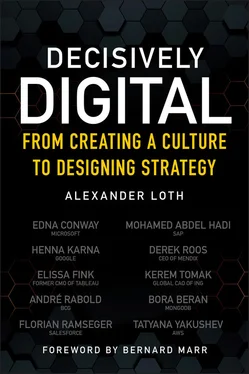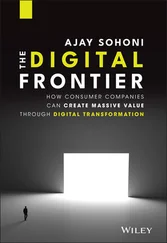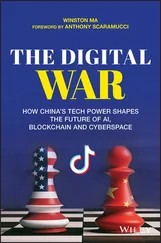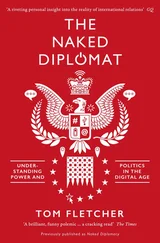The issue here is that the ads only get seen when people open the links they see in their news apps or social media feeds. Thus, a lot of what is published is often sensationalized, no matter how trite the story, so as to get you to click the headline.
Alexander: Do you mean clickbait?
Florian:In a way, yes. Engineers at social media companies can tell you that it is difficult to use natural language processing algorithms to filter out fabricated news stories on their platforms, because they are so similar to real news. Partly that is because many people who distribute false news actually believe them to be real. But the opposite is also happening: real news is using a lot of the same tactics to lure people to their sites. Quality journalism gets drowned out in a world of false and trivial content.
What is worse, in the US, there is a trend where we see political organizations, especially on the far right, buying up failing local newsrooms to spread their messages of hate and division. This is really troubling for our societies.
Now, I don't like the blanket news bashing that we hear in pub conversations or in press conferences of certain politicians, so I want to make it clear that there are still fantastic newsrooms out there, such as the Financial Times , the Wall Street Journal , and Die Zeit here in Germany, among others. By pivoting toward digital subscriptions and away from advertisement, they are able to withstand some of these negative influences. In Switzerland there is a great project, called Republik , which is a newsroom that is entirely reader-financed. But these examples are unfortunately becoming the exception and not the norm.
Alexander: You mentioned how some companies pick up on new opportunities and others miss out on them. How then should business models evolve to survive and thrive in an increasingly digital world?
Florian:Many companies use different types of digital technologies to automate and streamline their business processes, but I think you have to look at it not only from an optimization perspective, but also from the perspective of what new value you can deliver to your customers.
B2C businesses in particular have to think about how they can use digital technologies to play in the “experience economy,” as Joseph Pine and James Gilmore call it. 1 Brands like Apple, Starbucks, and Tesla understand they don't just sell phones, drinks, and cars, but that through the various interactions with the customers they create experiences, long-lasting feelings, and, if done right, a sentiment of belonging to a tribe.
It depends of course on the industry, but many businesses can still do better at providing information about their offerings on the web — a simple stage-one technology. Others could think about stage-two strategies, such as interacting with their customers via an app or creating an online marketplace. An example of a stage-three strategy could be to think about what information you can gain from your data that could be valuable for your customers in real time. This could justify a switch to a subscription model, as we see happening in so many markets.
I rolled my eyes when I read the other day that a meal-delivery startup described itself as a “tech company” because they have all that data about their customers. But there might be some truth in it. From my inputs in their app, they know that I like spicy curries and that I don't eat raw fish. If they use that information to set up a just-in-time supply chain for fresh produce but also let me see where my order is at any point in time and maybe also provide me with additional content, for example in the form of tailor-made recipes, then they are actually closer to a tech company than a traditional grocery store.
“What would your business model be if you were founded as a tech company?” This is especially true if you are a brick-and-mortar company. Because if you don't ask that question, someone else will and will roll up your market.
Most businesses need to ask themselves, “What would your business model be if you were founded as a tech company?” This is especially true if you are a brick-and-mortar company, because if you don't ask that question, someone else will and will roll up your market. In other words, companies have to watch out that they don't get stuck in what Clayton Christensen called the innovator's dilemma. 2
Alexander: What are some of the mistakes you see that lead to this dilemma?
Florian:Many businesses and organizations realize that there is value in digitalization. But they often just replicate analog processes in digital form, often with the goal of saving physical resources or reducing labor costs. In other words, they are stuck in what I earlier described as stage one of the digital transformation. The companies that are leapfrogging the competition are the ones that don't necessarily try to replicate the analog world, but use the digital building blocks from all three stages to create something completely new — including that customer experience that I just mentioned.
Audi, for example, doesn't give out paper brochures anymore, as most customers peruse Audi's website instead. However, the website doesn't provide that much additional value over a paper brochure. True, you can play around with different configurations, but if you want to buy a new car, you still must haggle with a car dealer over the price.
Contrast that with the experience of buying a Tesla. You can reserve a car and pay by credit card right there and then, just like when you buy a pair of Nike shoes from Zappos. And you never get any buyer's remorse that comes from being pressured by a car salesman.
It starts with the shopping experience, but it doesn't stop there. From the way you contact customer support to providing software updates over the air to unlocking the car with the phone, every rock of the traditional car experience has been turned over to see how it can be improved. Tesla was not successful in breaking into a market dominated by traditional firms because they made cleaner vehicles. Instead, Tesla built the first car for people who think of themselves as digital natives.
Alexander: What will happen to companies that don't level up in digital maturity and organizational readiness?
Florian:As one of my colleagues at Salesforce puts it, it's “digital or disappear.” The best examples are taxi businesses in many countries. Only a couple of years ago you would have thought that, because they are part of the service economy, they are immune to threats by technological innovation. With the rise of the so-called ride-sharing apps, we now know that that was wrong.
But it is a mistake to think that that is only because Uber and Lyft are cheaper. Instead, these challengers successfully built their business models on stage-two and stage-three technologies. They created added value by letting the customer order and pay for a ride with a single click on the app. Compare that with my experience, late at night after a trans-Atlantic flight, having to find a taxi driver at Frankfurt airport who was willing to accept credit card payment. It is mind-boggling that in this day and age many of them still insist on cash payment.
Don't forget the value that the Uber customer gets from having a real-time map showing the suggested route. Anyone who has ever been taken on the scenic route by a taxi driver wanting to squeeze the customer for an extra dollar appreciates this real-time information.
The fate of the taxi industry was not inevitable. The shakeup could have been avoided in two ways. First, taxi businesses everywhere should have emulated London black cabs, with their clean, spacious, and safe cars and their courteous, knowledgeable, and honest drivers.
Читать дальше












